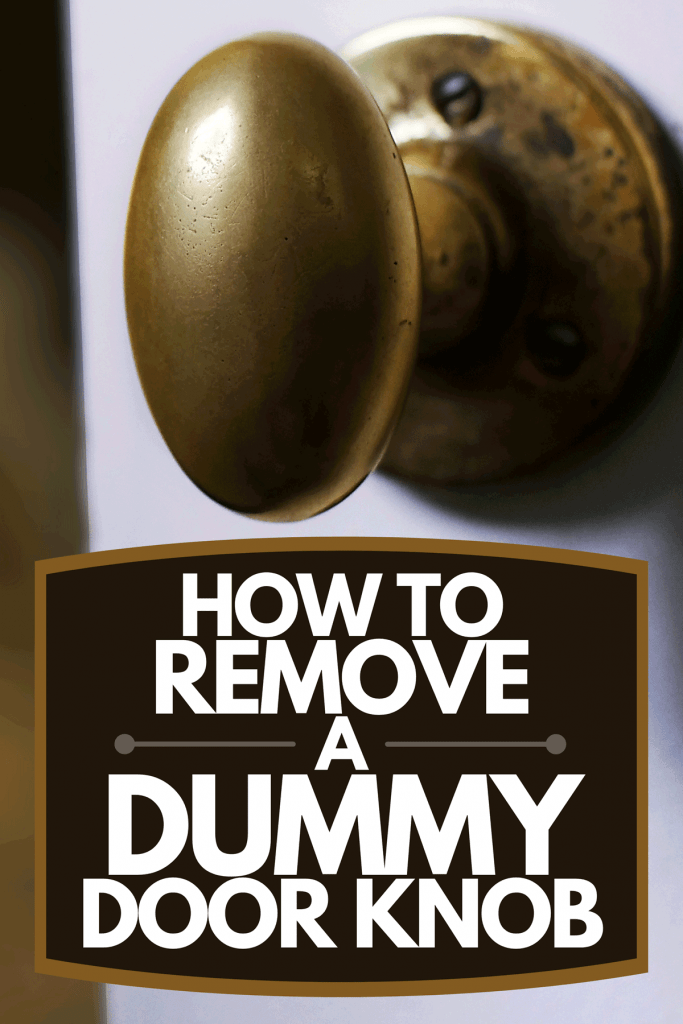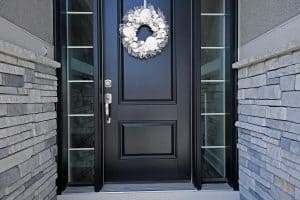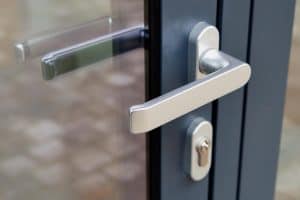If you’re someone who likes to decorate your home, then you know that door knobs can help tie a room together. You also probably know that dummy door knobs are a good way to add a design to doors that don’t need to lock. But do you know how to remove them? If you don’t, then no need to worry because we’ve researched the steps for you, along with helpful tips and tricks that you might need.
To remove a dummy door knob, you can follow these steps:
- Check for visible screws. If there are any, unscrew them, and the whole door knob should come off.
- If there are no visible screws, look for a tab on the side of the door knob.
- Push the tab, and remove the knob.
- Pry off the rosette with a screwdriver to reveal the base bracket with the two screws.
- Remove the screws.
- If the base bracket does not come off, check the shaft for a third screw.
- If there is a third screw, unscrew it, and remove the base bracket.
The process is simple, and with the right tools, you can do it yourself. But if you need a step-by-step guide, then keep on reading because we have one too. We’ve also answered some other questions about dummy door knobs and we'll give you some design tips in the next sections.

How do you remove a dummy door knob with or without hidden screws?
Before you start taking the door knob apart, first check if it has visible screws (there are usually two). If it does, then use a screwdriver to remove them and then remove the door knob from the door as shown in this video below:
Lever-type dummy door knobs have screws, however, that you can remove with an Allen wrench. For a round dummy door knob that doesn’t have visible screws, you can follow these steps:
- Look for a raised tab on the side of the door knob, and use a flathead screwdriver or a thin tool to push it in.
- Pull the knob off of its base shaft. The cover on the door knob’s base or rosette should still be attached to the door.
- Pry off the rosette with a flathead screwdriver by inserting it under the rosette’s rim and twisting it. If there are notches on the sides of the rosette, insert the screwdriver there. You can put a cloth or towel around the area where you will be moving the screwdriver around to prevent scratches on the door. With the rosette removed, you should see the screws and the base bracket.
- Remove the screws using the appropriate screwdriver. Two of them should be visible on the base bracket. Check for a third screw possibly hidden in the center of the base shaft.
- Remove the base bracket.
This video is quite helpful in illustrating the process:
What do you use a dummy door knob for?
Dummy door knobs are simple, decorative knobs on doors that don’t need to be locked. They act as handles for opening and closing doors. These knobs can also help complete the design of a room by giving the look of a door knob without needing to install a working door knob. French doors, double doors, or shallow closets and pantries usually use dummy door knobs.
For French doors, you need a full set of dummy knobs on both sides. The doors don’t need working knobs since they don’t need a latch to open or close, so a dummy knob helps push or pull them open.
Closets or pantries can use a half or a full set, and you use the knob as a handle to push or pull the door from the magnet or ball-catch that keeps it closed.
What is a dummy half knob?
Dummy door knobs can come in full (double) or half (single) sets. A full dummy door knob is a set of two knobs. In comparison, a dummy half knob or a half dummy door knob only has one knob.
They both work as decorative knobs. Aside from their use for doors that don’t need to lock, half dummy door knobs can be helpful for shallow closets or doors that do not have a pair, like linen closets.
Does a dummy door knob turn?
For a door knob to turn, it needs a turning shaft or spindle. Dummy door knobs are surface-mounted and don’t have those parts, so they don’t turn. At the same time, they don’t need these parts because they only act as handles. To open or close a door with a dummy door knob, push or pull the knob. You can read more on this topic here: Do Dummy Door Knobs Turn?
Can you turn a regular door knob into a dummy door knob?
Yes, you can turn regular door knobs into dummy door knobs. However, this can depend on how the door knob is attached to its set. For example, some door knobs are screwed onto the door and attached to their rosette. You can unscrew them, slide them off their spindle, and then screw them to the door, to make a dummy door knob.
You can also install the set of two door knobs as you normally would, but not including the latch. These knobs might still turn, but without a latch, they function like dummy door knobs. Lastly, some sets let you remove only the knob, and you can make it into a dummy door knob by attaching it to a dummy spindle and a decorative rosette that you can install yourself.
Can you mix and match door knobs?
When designing elements in your home, it helps to be consistent but practical. The same goes for door knobs. You have the option to match all of them, but that can be impractical since rooms can look different, so you can mix designs too. There are generally two design choices you can make: a split finish or blending.
Split Finish
For a split finish, all the door knobs mostly match throughout the house. However, those on the interior of the door in areas like the kitchen or bathroom match the room. The door knobs can have slightly different colors or finishes similar to the knob on the other side. This way, the door knobs won’t clash with the design of the house or the room.
Blending
For this design option, you blend or match the design of the door knobs with their surroundings, or you follow the general aesthetic of the house. In this case, the knobs have similar but not necessarily matching designs.
So if the home has a modern design, then use chrome or nickel finishes instead of wrought iron. Likewise, you should also fit the door for their function. Bathroom doors, for example, should be able to withstand high humidity. Just make sure that the door knobs are similar in model, size, or shape, and complement each other so they don’t look out of place.
Final Thoughts
While they don’t have much use for security, dummy door knobs can be a great way to add decorative touches to your home. Now that we’ve given you the steps, you can remove your old dummy door knobs and add new ones from door to door as needed.
Also, we’ve given you tips on how you can use these door knobs and the other kinds to achieve the design you want for your home. Whether you choose to mix or match, as long as it’s coherent, practical, and it's what you really want, then it’s bound to be a great design.



